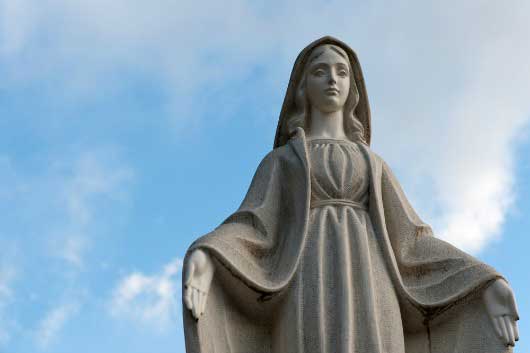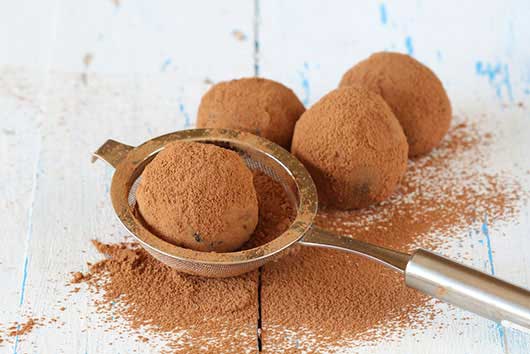
Every December 12, Catholics all over the world, especially in Latin America, celebrate the day of the Virgin of Guadalupe. But in Mexico, this day is one of the most important holidays of the year. Our Lady of Guadalupe is the patron saint of Mexico, where she is known as La Reina de Mexico and is very much a cultural icon.
According to accounts published in both Nahuatl and Spanish in the 1600s, the image of the Virgin Mary appeared to the indigenous peasant, Juan Diego, in the hills of Tepeyac in the outskirts of Mexico City. It was December 9, 1531, and Juan Diego was on his way to the city from his village when he saw the image of a young woman surrounded by light.
The young woman spoke in Nahuatl and told Juan Diego that a church should be built in her honor at the top of Tepeyac hill, where there had once been an Aztec Temple to the goddess Tonantzin. But when Juan Diego related this to the Spanish archbishop, Juan se Zumárraga, the cleric didn’t believe him and told Juan Diego to go back to Tepeyac and ask the Virgin for a miracle so that she might prove that what she said was true.
The Virgin told Juan Diego to gather Castilian roses at the top of the hill. The Virgin helped arrange the flowers in Juan Diego’s tilmátli (a type of cloak), and he carried them back to Mexico City. When he arrived on December 12 and opened his tilmátli in front of the archbishop, the image of the Virgin of Guadalupe had been imprinted on the tilmátli. The tilmátli with the imprint is still on display at the Basilica de Guadalupe, one of the most visited shrines in the world.
Read Related: The Beautiful Lady: Our Lady of Guadalupe
On the days leading up to December 12, people begin the pilgrimage to the Basilica de Guadalupe in Tepeyac to pay homage to La Virgen. Many make their way on their knees, carrying candles, images, flags and illustrations of her likeness to give thanks and honor the Queen of Mexico.
The image of the Virgin of Guadalupe is of a woman with brown skin. This, and the fact that the account of her apparition to Juan Diego was related in texts in both Nahuatl and Spanish during the time of the Conquest of Mexico, make her the ideal unifying force for what Mexico was to become: a mestizo blend of native and Spanish blood. In many ways, the image of La Guadalupana, as they sometimes call her, is one that unifies and reconciles Mexico’s history and blends its Spanish and Aztec heritage.
The icon of Nuestra Señora de Guadalupe was used by father Miguel Hidalgo as he launched the fight for independence. The image of the Virgin has since been an important image in Mexico’s struggle for freedom and as a patriotic symbol. Revolutionaries like Zapata always carried a flag with her image as they went into battle, and later, when they marched triumphantly into Mexico City. She is present in all aspects of Mexican life, and her image has become synonymous with Mexico. In places like truck stops, bus stations and automobile garages, there are small shrines to the Virgin where people can pray. In many churches and shrines, instead of a crucifix there is an image of the Virgin. Her image is deeply etched into the consciousness of the Mexican people; so much so that it has even become a form of kitsch. She can be found on t-shirts, calendars, towels, tattoos, cups, and even bank checks.
La Guadalupana is revered and respected in the same way mothers are revered and respected by Mexican men, despite the country’s machista society. Just as the toughest men might melt and bow to their mother, they do the same for the Virgin. From her very beginnings, she was elevated to more than a saint. She is a symbol of what it means to be Mexican and of national patriotism. In many ways she is Mexico.











